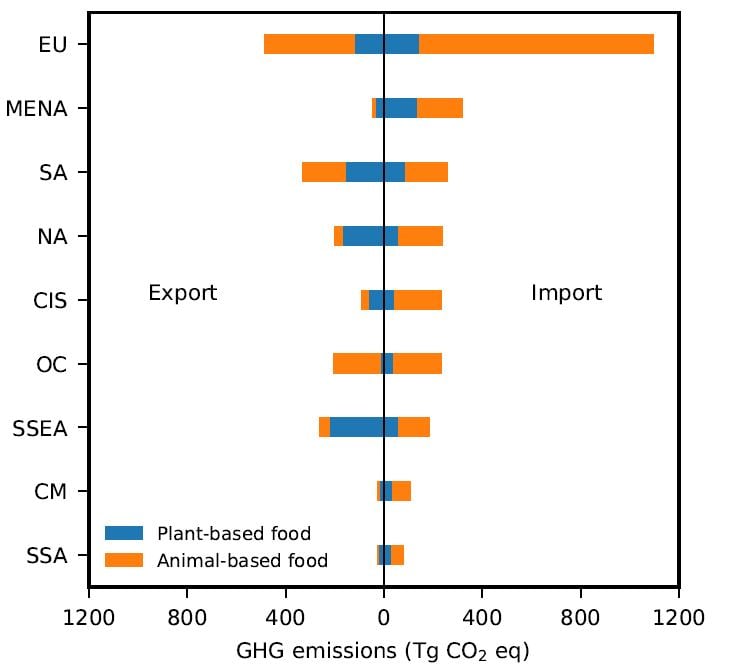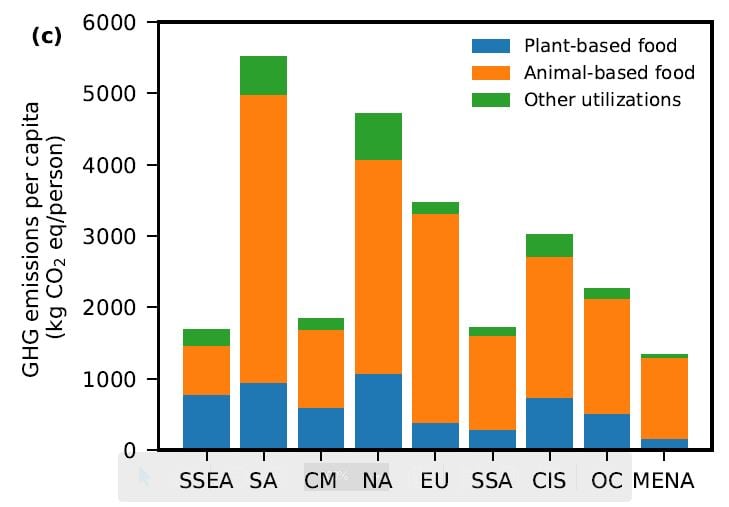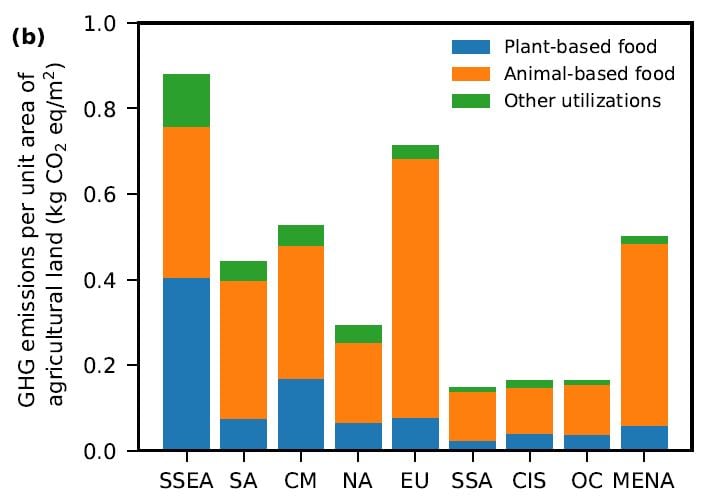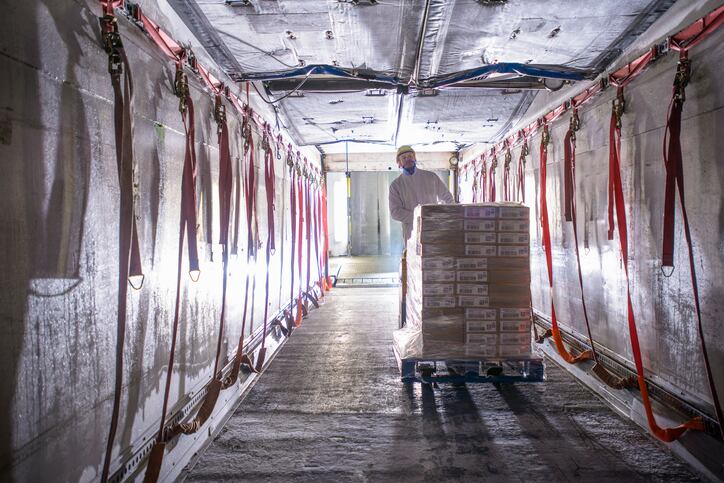Most global greenhouse gas (GHG) emissions created by food production come from Asia and Latin America, according to a new study. Food production makes up around 35% of total GHG emissions, with animal-based foods producing roughly twice the emissions of plant-based ones.
The new study claimed to be the first to calculate the emissions explicitly from plant-based production and animal-based production on a global scale.
Researchers from the University of Illinois in the US looked at the emissions of carbon dioxide, methane and nitrous oxide from the production of 171 different crops and 16 animal product and used data, from the year 2010, from more than 200 countries.
They estimated that global food production contributes about 17.3 billion metric tonnes of carbon dioxide equivalent per year. Of those emissions, 57% related to the production of animal-based foods. Plant-based food production made up 29%. The remaining 14% of emissions came from the conversion of agricultural land converted into food production.
The study revealed that rice production had the highest plant-associated GHG emissions, while beef production contributed the most to animal-associated emissions (12% and 25%, respectively).
South and South-East Asia had the highest plant-food-related emissions. South America had the highest animal-food-related emissions. The countries with the leading greenhouse gas emissions from animal-based foods are China at 8%, Brazil at 6%, the US at 5% and India at 4%. The countries with leading greenhouse gas emissions from plant-based foods are China at 7%, India at 4% and Indonesia at 2%.
But food companies in Europe should burden much of the responsibility, said Atul Jain, an atmospheric sciences professor at University of Illinois and study lead. The EU’s imports of animal-based foods contribute nearly 1.200 billion metric tonnes of carbon dioxide equivalent per year, he said.

“The study [see fig 5 above] clearly shows that the EU imports a lot more animal-based food than any other region," he said. “This clearly suggests that the EU is consuming a lot more animal-based food, which they import from other countries.” This is also clear, he added, from fig 2c [see below] “which clearly suggests that EU’s per capita consumption of animal-based food is quite high.”

Figure 2b further suggests that the EU is also producing a lot more animal-based food per unit area basis.

How many emissions could the EU save by importing less food?
“We may have to analyze the results further to answer that question,” responded Jain. But he warned emissions are set to worsen.
“We estimate that population growth will drive the expansion of food subsectors, including crop cultivation and livestock production, as well as product transportation and processing, irrigation and materials like fertilizer and pesticides,” he said. “Developing climate mitigation strategies must rely on accurate estimates of GHG emissions from all sources, including those from the production and consumption of total and individual plant- and animal-based foods.”
The study pinpointed the main contributors to plant- and animal-based food sector emissions. This will allow policymakers to take action, the lead scientist said. It found soil emissions made up around 14% of total food-related emissions. Reduced till or no-till farming could therefore minimize the disturbance of soil and decrease GHG emissions from the soil. “
Another example is improving management of crop residues, such as the practice of returning residues to the field,” he added. “In many developing countries, farmers directly burn crop residue, which causes both GHG emissions and air pollution. Returning residues to the field would reduce GHG emissions. This practice would increase carbon sequestration in the soils and minimize soil nutrient loss.”
Changing the types of fertilisers used on land for plant-based food production could also help reduce production emissions, he said, as would improving the efficiency of fertilizer use through precision fertilizer management.
"This approach applies fertilizers precisely based on the demand and timing of fertilization according to specific field conditions of a given crop," he explained. "It’s also possible through technological innovation to reduce GHG emissions from fertilizer manufacturing. “Finally, there is great potential in mitigating livestock emissions, such as reducing the CH4 emissions from enteric fermentation by adding methane inhibitors to feed. Methane inhibitors are chemical compounds with inhibitory effects on rumen archaea, which are the generators of CH4 from enteric fermentation.”
Reference
Global greenhouse gas emissions from animal-based foods are twice those of plant-based foods
Nature Food
DOI: 10.1038/s43016-021-00358-x



